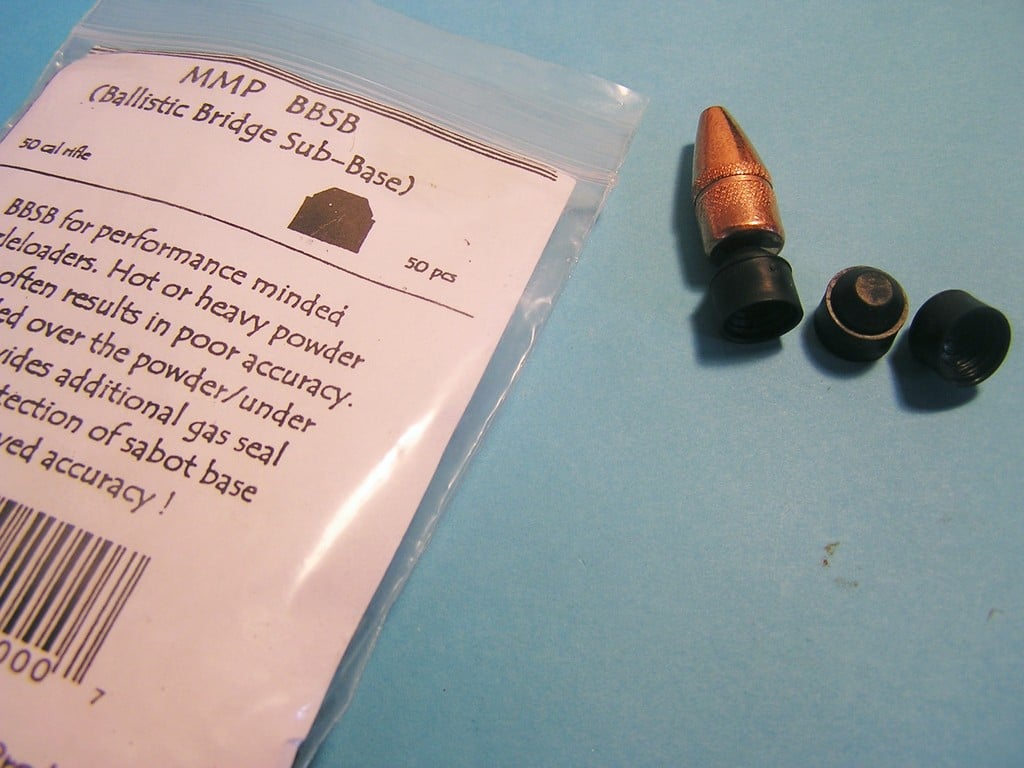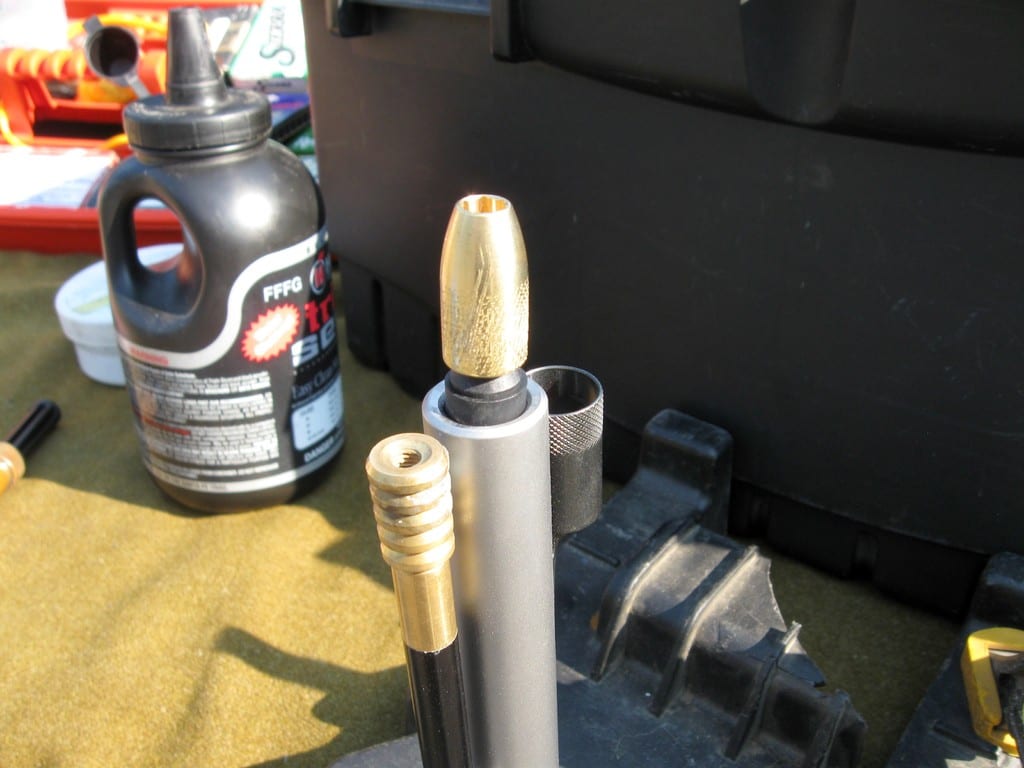- Joined
- Oct 15, 2017
- Messages
- 100
- Reaction score
- 91
My buddy (what a guy!) lent me his brand spanking new Lyman Great Plains mold and I cast up a bunch of pretty bullets. Inspected, weighed and sorted to within one grain (max range I'll ever shoot elk with open sights is 200 yards). Lubed with Nasa plus Stihl oil. Sized down to fit my bore nicely. Took them to the range and expected them to shoot into one hole like everybody else is doing .
.
TC Omega stainless steel .50 cal with QLA removed and recrowned, GP bullets 400 grains at about 8.5 BHN, 100 grains volume equivalent weighed to within .1 grain of BH209, dry wool wad 1/8" .54 cal, Fed 209A primer, Bestill carbide breechplug, Leupold VX Freedom on 12x, fairly stable shooting bench and rests, moderate wind, about 80 degrees. Have been switching stocks but just now settled on a synthetic TC thumbhole for elk hunting in just a month from now. It has been reinforced with JB weld behind both action lugs, barrel free floated, and screws torqued to proper specs.
At 100 yards, four three-shot groups went from 3-1/2" to !-3/4" for an average of 2-1/2". Quite consistent with no flyers, but what am I doing wrong?
Wondering if it's me and/or my shooting technique, I shot some sabots (which are illegal to hunt with in Colorado) and then my .270 centerfire and nope, got much better groups. So I don't think it's me or the scope mounts. I have gotten a couple of sub-inch groups with other home cast conicals, but consistency is eluding me.
Went back a couple of days ago and tried again, but this time the only thing I changed was to use a .50 cal wool wad instead of .54, and the groups improved somewhat. For once I was able to shoot at 200 yards without high winds and got an incredible group of 1-1/8", but that may have been an anomaly??
So my question is, "What's the consensus on wool wads for accuracy?" Frankly, I find it difficult to get the oversized .54's to get started straight in a .50 bore and often end up fishing them out with a tweezers and starting over. And yes, I have watched Idaholewis' video on "scrunching" the wads. My hand tremor doesn't help any, but I'm not so good at "scrunching".
on wool wads for accuracy?" Frankly, I find it difficult to get the oversized .54's to get started straight in a .50 bore and often end up fishing them out with a tweezers and starting over. And yes, I have watched Idaholewis' video on "scrunching" the wads. My hand tremor doesn't help any, but I'm not so good at "scrunching".
So what are you all doing with wads and conicals for best accuracy?
TC Omega stainless steel .50 cal with QLA removed and recrowned, GP bullets 400 grains at about 8.5 BHN, 100 grains volume equivalent weighed to within .1 grain of BH209, dry wool wad 1/8" .54 cal, Fed 209A primer, Bestill carbide breechplug, Leupold VX Freedom on 12x, fairly stable shooting bench and rests, moderate wind, about 80 degrees. Have been switching stocks but just now settled on a synthetic TC thumbhole for elk hunting in just a month from now. It has been reinforced with JB weld behind both action lugs, barrel free floated, and screws torqued to proper specs.
At 100 yards, four three-shot groups went from 3-1/2" to !-3/4" for an average of 2-1/2". Quite consistent with no flyers, but what am I doing wrong?
Wondering if it's me and/or my shooting technique, I shot some sabots (which are illegal to hunt with in Colorado) and then my .270 centerfire and nope, got much better groups. So I don't think it's me or the scope mounts. I have gotten a couple of sub-inch groups with other home cast conicals, but consistency is eluding me.
Went back a couple of days ago and tried again, but this time the only thing I changed was to use a .50 cal wool wad instead of .54, and the groups improved somewhat. For once I was able to shoot at 200 yards without high winds and got an incredible group of 1-1/8", but that may have been an anomaly??
So my question is, "What's the consensus
So what are you all doing with wads and conicals for best accuracy?








